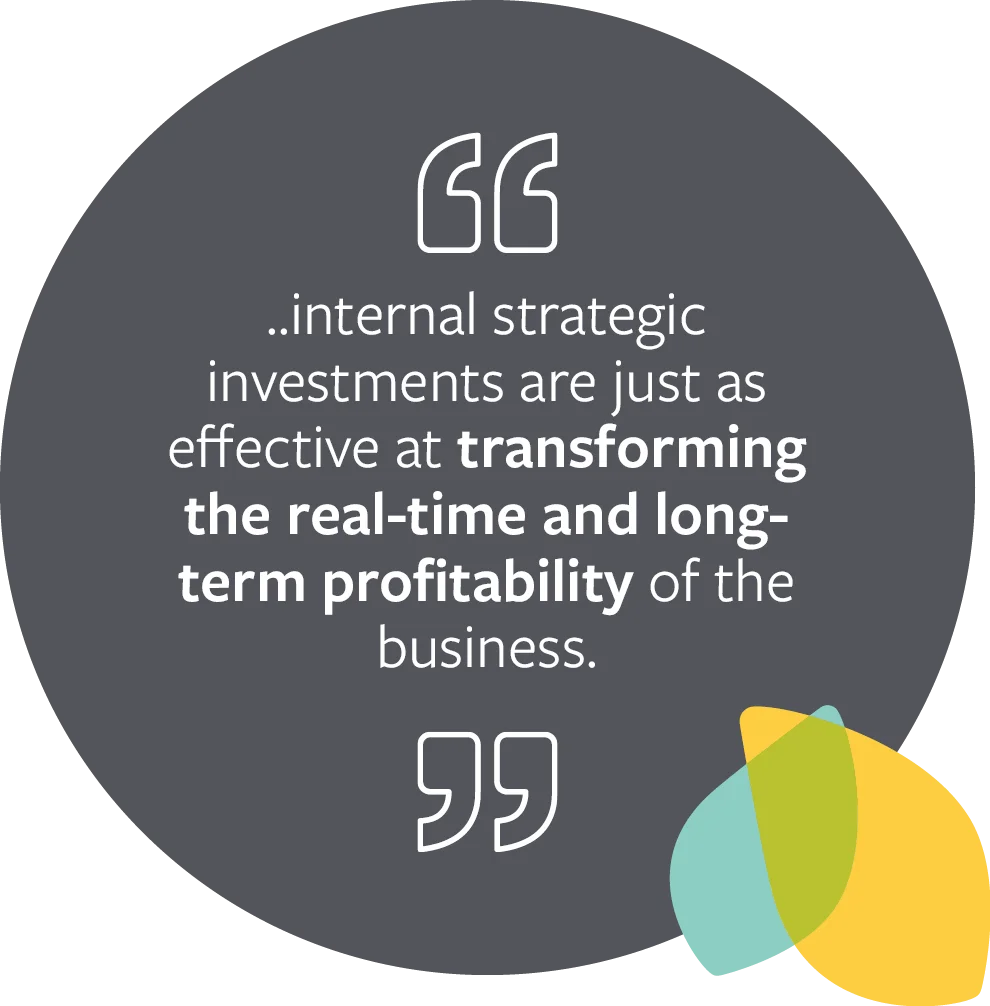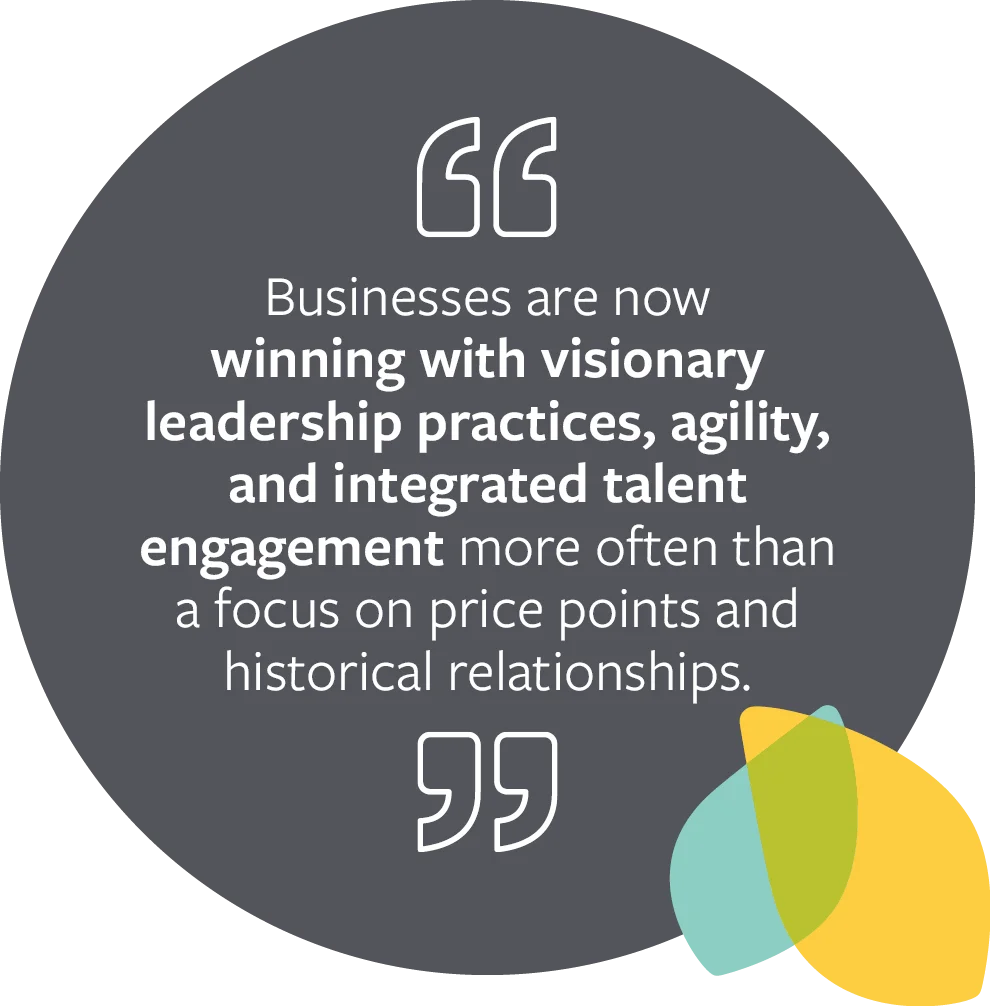If you’re a CEO looking for the next level of profitability, keep reading.
Despite profitability as the single indicator of success, most CEOs are still leaving heaps of profitability and innovation on the table. Through nearly two decades of delivering coaching and onsite strategy services for CEOs and their leadership teams, we have discovered this cash abandonment is a consistent pattern. More worrisome, even when the potential windfall is known, CEOs struggle to evolve their strategies and resources to capture untapped profit. Ultimately, because the decisions CEOs make determine the level of success the business will achieve, we ask: why would a hard-driving CEO, who’s responsibilities demand capturing viable profitability streams, intentionally avoid strategic investments and marginalize company success?
Traditionally, CEOs are well versed in “by the book” profit generation: products, sales, partnerships, and marketing. These external, market-facing dynamics are essential to profitability, however internal strategic investments are just as effective at transforming the real-time and long-term profitability of the business. The challenge in harnessing internal profit and innovation lays within the employee focus of the business. Eighty percent of CEOs report a lack of confidence in leading the “people dynamics” of their business. The fiduciary reality for this subset of CEOs to consider is highly engaged workforces are 38 percent more likely to have above average productivity (Workplace Research Foundation) and outperform their peers by 147 percent in earnings per share (Gallup, Employee Engagement Drives Growth). “The Engagement Profit Chain,” coined by Kevin Kruse, states engaged employees lead to higher shareholder returns and profit generation because they offer better service, higher-quality products, are more productive, and achieve significantly higher rates of overall customer satisfaction. Viewing the maximization of human potential and performance systems as something outside of your tactical wheelhouse is a mistake. People and performance systems aren’t “fluff,” they’re profit.
In addition to leveraging talent, it is imperative the business is agile and adaptable through change. Ninety-six percent of CEOs and board members say they expect their organizations will face serious threats or disruptions to their growth prospects in the next three years, and 76 percent of senior leaders indicated their ability to change will be the key source of competitive advantage in the future (PwC). Yet, despite these realizations, it is reported that 70 percent of current change initiatives fall short of desired results. Although leaders foresee an onset of obstacles caused by future changes within their business and understand the importance of agility, many actively avoid the internal investments that capture the profitability and sustainability at play.

With the onset of technological advancements and new generations of workers evolving the workplace, the traditional CEO playbook changed overnight. Businesses are now winning with visionary leadership practices, agility, and integrated talent engagement more often than a focus on price points and historical relationships. In our work across industries, we have helped businesses avoid becoming a commodity price point by evolving total value, agility, and “sticky” innovations that become core to the customer experience. Achieving the highest level of competitive success and profitability now requires the application of fundamentals across the external and internal dynamics of business. Acquiring this two-fold CEO strategy and investment approach is no longer optional. CEOs must embrace opportunities to drive exceptional profits through strengthening the business from the inside out.

In our next three articles, we will discuss specific segments of CEO strategy and investment that generate transformational business performance and increased profitability. We will begin with visionary leadership practices, which entails building enterprise-focused leaders, generating an impactful board advisory, and deploying innovative organizational strategy systems. The following article will explore organizational agility within collaboration practices, progressive change management, and optimized organizational design. The last article in this series will focus on integrated talent management where we will examine the meaning of comprehensive talent development, focused employee engagement, and how each one drives exceptional competitive advantage and profitability generation.
We have observed CEOs don’t intentionally avoid internal profitability opportunities. We know many are not equipped with resources, personal expertise, or a roadmap to bring internal profitability to life. However, in the pursuit for the highest performance possible, this is fertile ground. It’s not rocket science, but there are methods, processes, and strategies required to maximize performance and profitability across the business. For CEOs embarking on capitalizing internal business profitability, this is your stake-in-the-ground moment. If you are ready to create growth through your internal channels, follow this series of articles where we will provide rating tools and reflections to build clarity around untapped profit opportunities internal to your business.

